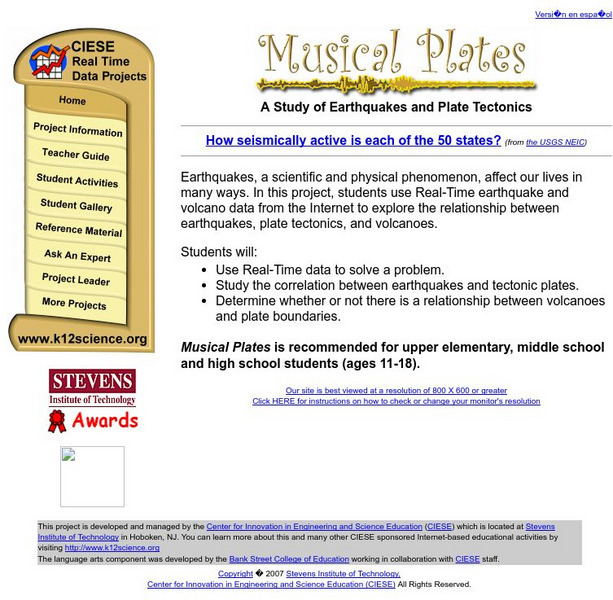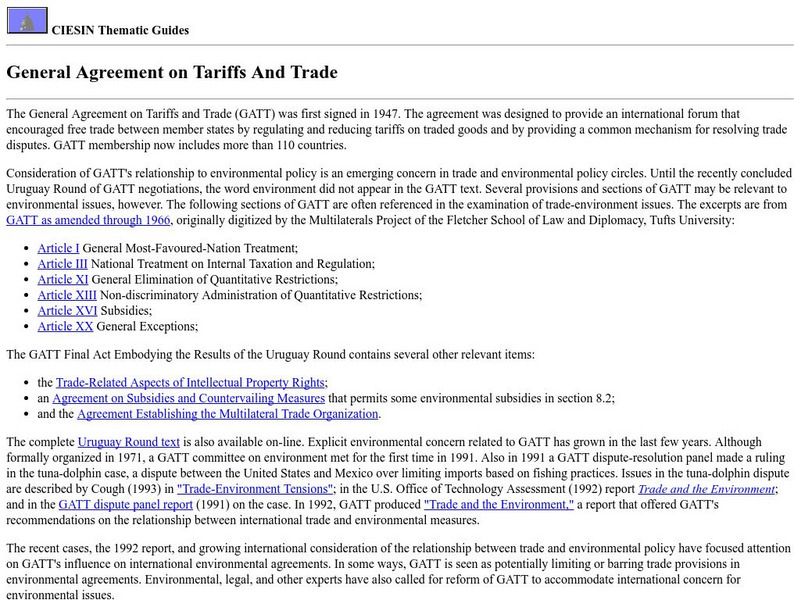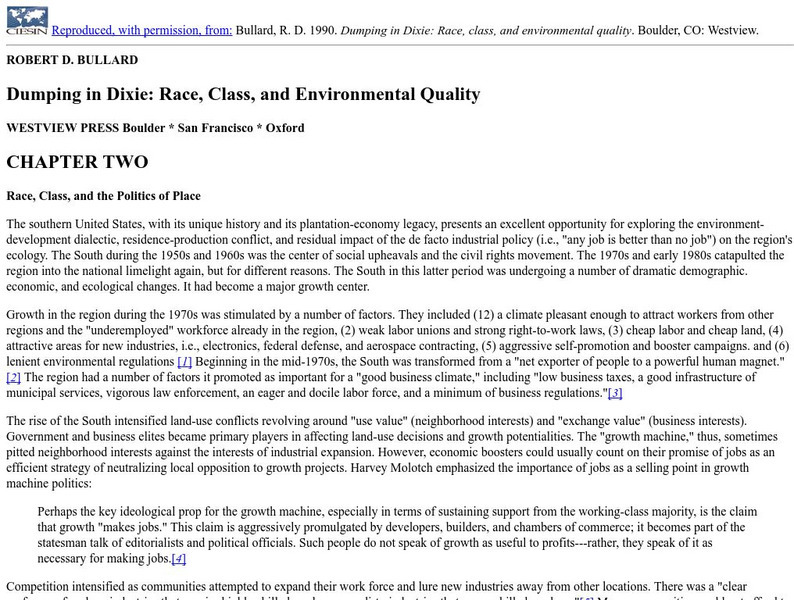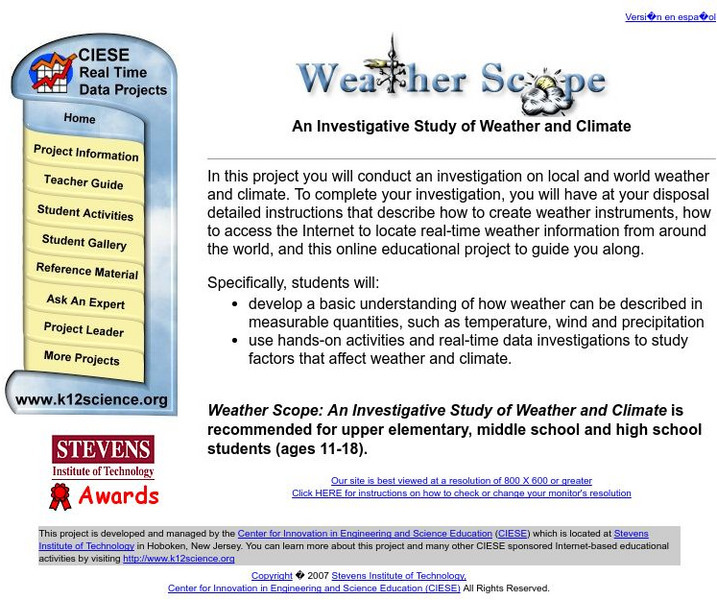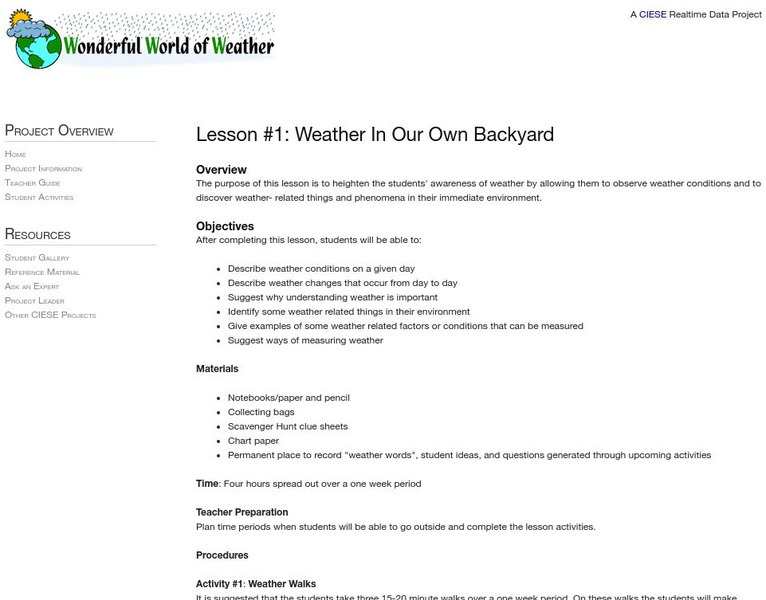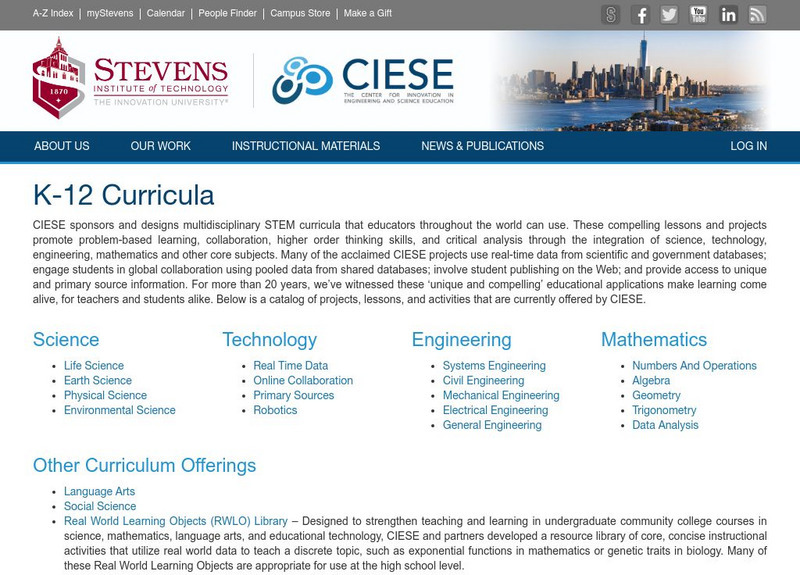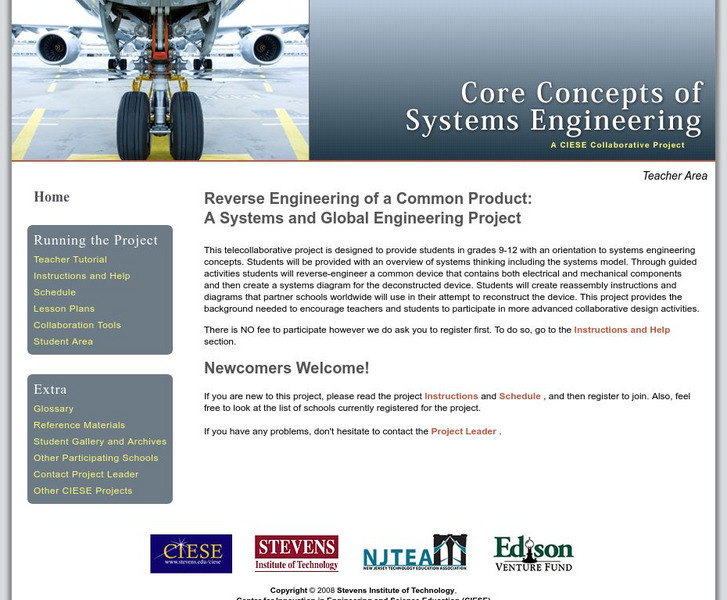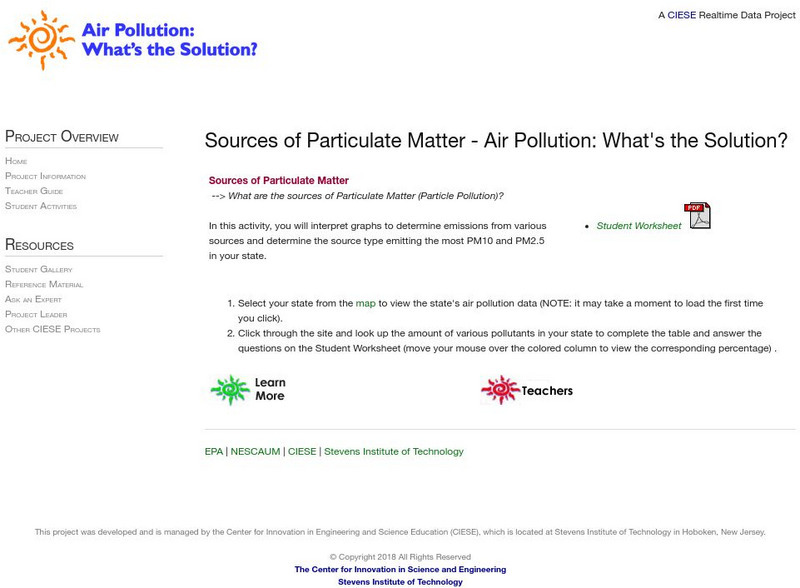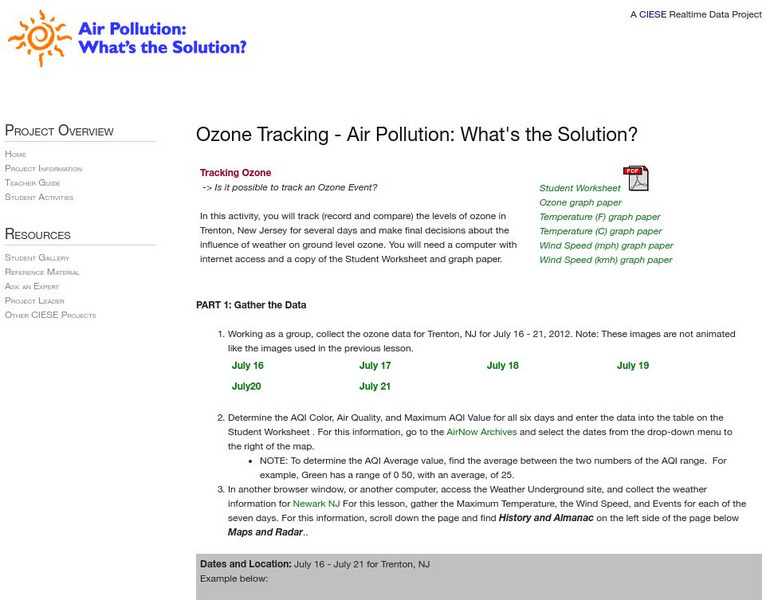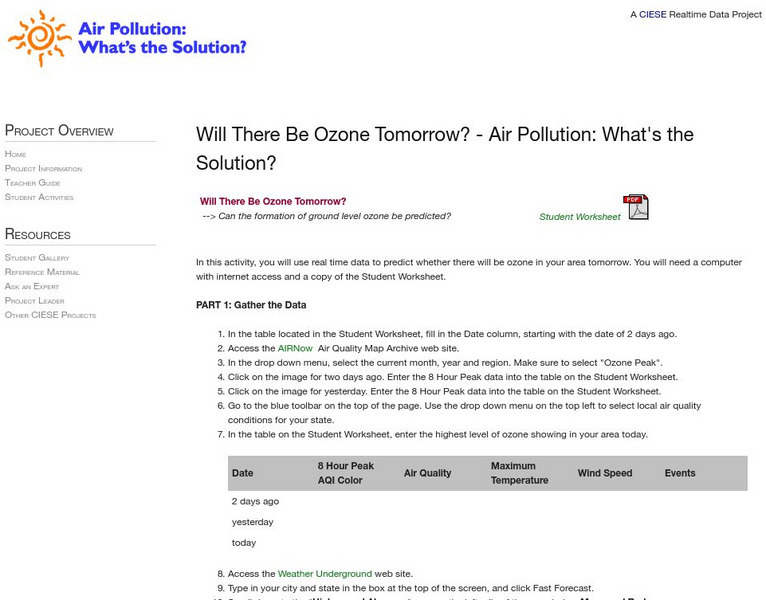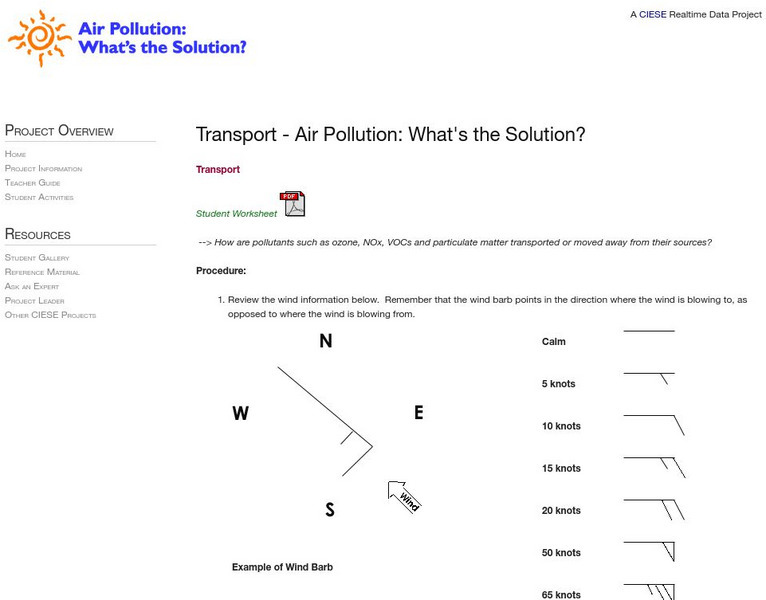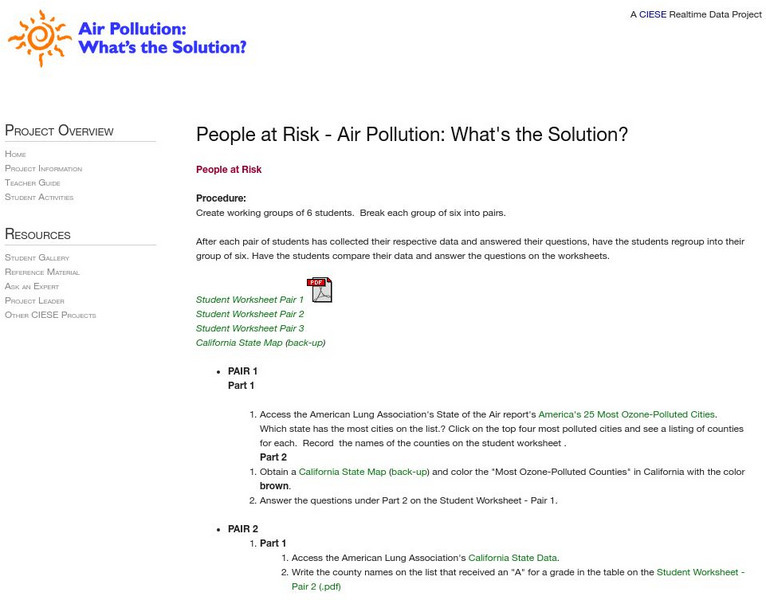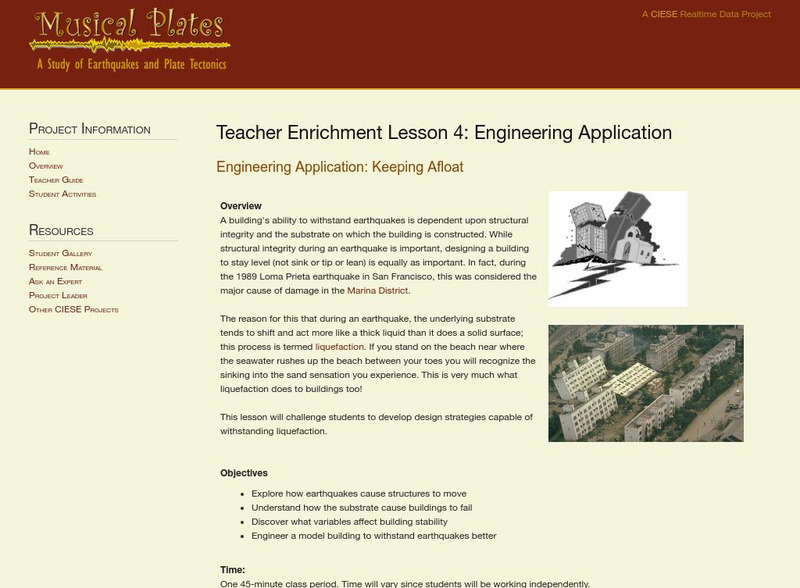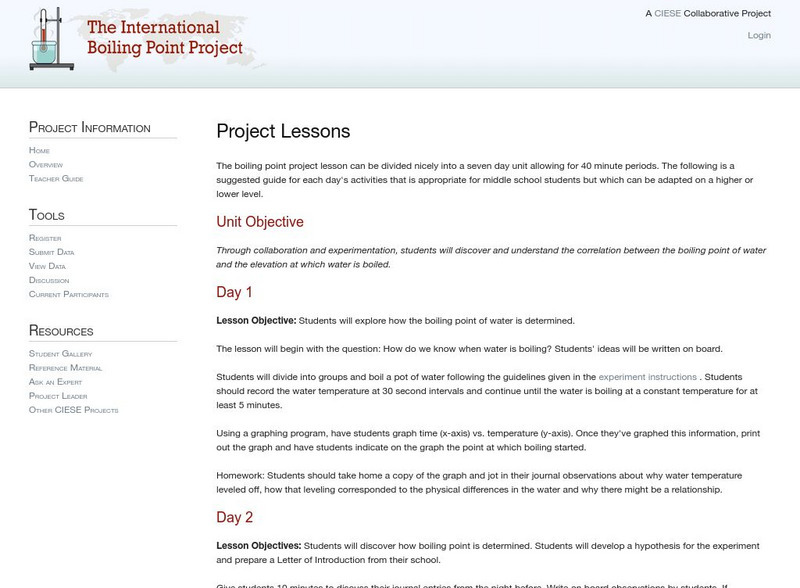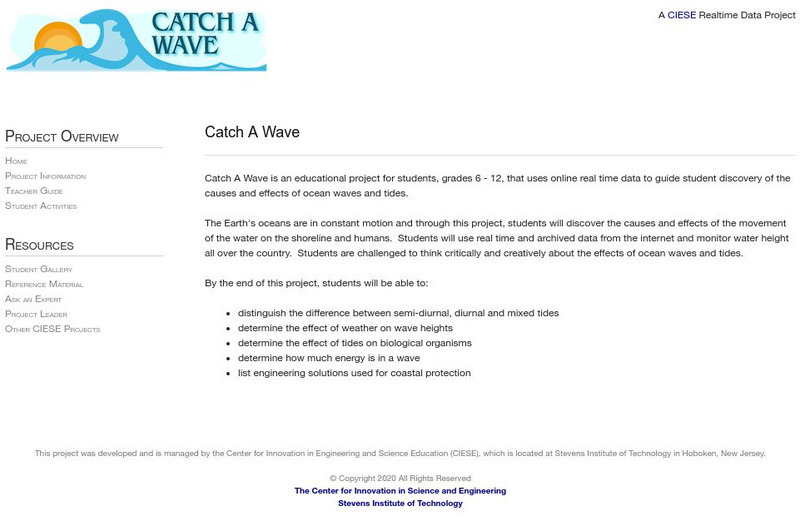Center for Innovation in Engineering and Science Education, Stevens Institute of Technology
Ciese: Biodynamic Farming
During this module students learn about biodynamic farming through hands-on activities that culminate in having multiple schools collaborate to design subsystems that are combined to make a working aquaponic system. During the SAGE...
Center for Innovation in Engineering and Science Education, Stevens Institute of Technology
Ciese: Carbon Imbalance: Algae to the Rescue? [Pdf]
A 95-page learning module that integrates biology, chemistry, and engineering. It includes in-class labs, virtual labs, and engineering design activities. Working with algae, students learn about and investigate how photosynthesis,...
Center for Innovation in Engineering and Science Education, Stevens Institute of Technology
Where Will Your Home Be in a Million Years?
Students will use the global velocities map to predict where their home will be in a million years.
Center for Innovation in Engineering and Science Education, Stevens Institute of Technology
Ciese: Musical Plates: A Study of Earthquakes and Plate Tectonics
This activity has students access USGS earthquake information to plot the their locations on a world map. Doing this will help students discover for themselves the boundaries of tectonic plates.
Center for Innovation in Engineering and Science Education, Stevens Institute of Technology
Ciese: Weather Scope: An Investigative Study of Weather and Climate
The activities in this comprehensive weather unit are designed for Grade 6 and up. Students will use real time data from around the world to conduct an investigation about weather and climate.
Center for Innovation in Engineering and Science Education, Stevens Institute of Technology
General Agreement on Tariffs and Trade
This site gives the history of GATT. Articles from GATT are provided in link form to provide additional information. This site has a wealth of information pertaining to the trade laws.
Center for Innovation in Engineering and Science Education, Stevens Institute of Technology
Dumping in Dixie: Race, Class, and Environmental Quality
The "Race, Class, and the Politics of Place" chapter from a book with the above title. The chapter discribes the typical pattern of economic development that institutionally aludes blacks in the Southern Region of the US.
Center for Innovation in Engineering and Science Education, Stevens Institute of Technology
Ciese Real Time Data Projects: Weather Scope: A Study of Weather and Climate
Use real-time data to study factors that affect weather and climate, create weather instruments, and share data with learners around the world.
Center for Innovation in Engineering and Science Education, Stevens Institute of Technology
Ciese Real Time Data Projects: Weather in Our Own Backyard
This lesson is divided up into three activities, two of which take place outside. By the end of the lesson students will be able to describe weather conditions on a given day and some of the factors that contribute to them. Students will...
Center for Innovation in Engineering and Science Education, Stevens Institute of Technology
Ciese: K 12 Education Curriculum: Online Classroom Projects
This site presents projects for individual classrooms and collaborative projects that can be done with other classes or schools. Most of these are science projects.
Center for Innovation in Engineering and Science Education, Stevens Institute of Technology
Ciese Real Time Data Projects: Musical Plates: A Study of Earthquakes
In this project, students use Real-time and volcano data from the Internet to explore the relationship between earthquakes, plate tectonics, and volcanos.
Center for Innovation in Engineering and Science Education, Stevens Institute of Technology
Ciese: Reverse Engineering of a Common Product
A telecollaborative project where students communicate engineering concepts across the globe. Student tasks are to deconstruct a common device, then design reassembly instructions for others worldwide to follow to attempt to reconstruct...
Center for Innovation in Engineering and Science Education, Stevens Institute of Technology
Ciese Real Time Data Projects: Size, Shape and Health Effects of Particulates
How does particulate pollution affect people with breathing disorders? Real time air quality data is provided for you to assess your state. Using this data you can determine who might be at risk in your particular area.
Center for Innovation in Engineering and Science Education, Stevens Institute of Technology
Ciese Real Time Data Projects: Air Pollution: Sources of Particulate Matter
Find out what sources are contributing to the particulate pollution in your state. An interactive bar graph shows the major types of air pollution and their sources. This particular activity focuses on two types of particulates.
Center for Innovation in Engineering and Science Education, Stevens Institute of Technology
Ciese Real Time Data Projects: Air Pollution: Tracking Ozone
In this activity, you will monitor the levels of ozone in Trenton, New Jersey for several days and make final decisions about the influence of weather on ground level ozone.
Center for Innovation in Engineering and Science Education, Stevens Institute of Technology
Ciese Real Time Data Projects: Air Pollution: Will There Be Ozone Tomorrow?
Collect and analyze real time ozone data to make determinations about the status of ozone in your local area. See if you can apply what you learn to make predictions about tomorrow's ozone levels.
Center for Innovation in Engineering and Science Education, Stevens Institute of Technology
Ciese Real Time Data Project: Air Pollution: Transport
This activity will teach you how to interpret a wind barb. You'll also access near real time wind data and pollutant animations to track the transport and final destination of pollutants
Center for Innovation in Engineering and Science Education, Stevens Institute of Technology
Ciese Real Time Data Project: Air Pollution: People at Risk
Evaluate low level ozone pollution in your own state and compare it with other areas to see if you should be concerned about the air you are breathing.
Center for Innovation in Engineering and Science Education, Stevens Institute of Technology
Ciese Real Time Data Projects: Building and Using Weather Instruments
In this lesson plan students will build and learn how to use three weather. They will use these instruments to collect weather data over a period of two weeks.
Center for Innovation in Engineering and Science Education, Stevens Institute of Technology
Ciese Real Time Data Projects:collecting Weather Data and Keeping a Weather Log
Over a period of two weeks students will use their class-made instruments to measure and record weather data. Students will also compare their data to online weather data. The final activity involves analyzing the collected data to look...
Center for Innovation in Engineering and Science Education, Stevens Institute of Technology
Ciese Collaborative Projects: The Global Water Sampling Project
By testing your local water quality, you will be able to compare your results with students around the world. Register your class, and follow the project instructions. Additional teacher resources, references, and Ask-an-Expert sources...
Center for Innovation in Engineering and Science Education, Stevens Institute of Technology
Ciese: Musical Plates: Engineering Application: Keeping Afloat
A lesson that looks at how to design a building so that it will withstand an earthquake and not sink or lean over.
Center for Innovation in Engineering and Science Education, Stevens Institute of Technology
Ciese: The International Boiling Point Project Lessons
A seven-instructional activity unit on discovering how the boiling point of water is affected by elevation. Additional materials, such as for assessment, can be accessed through the links on the left.
Center for Innovation in Engineering and Science Education, Stevens Institute of Technology
Ciese: Catch a Wave
In this project for Grades 6 to 12, students will use real data collected online to learn how waves and tides work. They will learn what causes water to move, and how waves and tides impact on humans, organisms and waterfront lands. They...


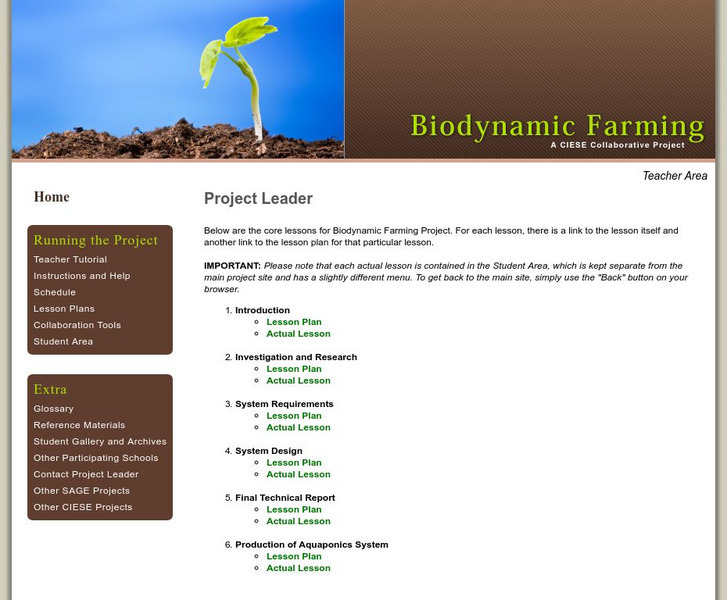
![Ciese: Carbon Imbalance: Algae to the Rescue? [Pdf] Unit Plan Ciese: Carbon Imbalance: Algae to the Rescue? [Pdf] Unit Plan](http://content.lessonplanet.com/resources/thumbnails/455842/large/bwluav9tywdpy2symdizmdeyny0xmdcynjyylwcwy3uxni5qcgc.jpg?1674855345)

